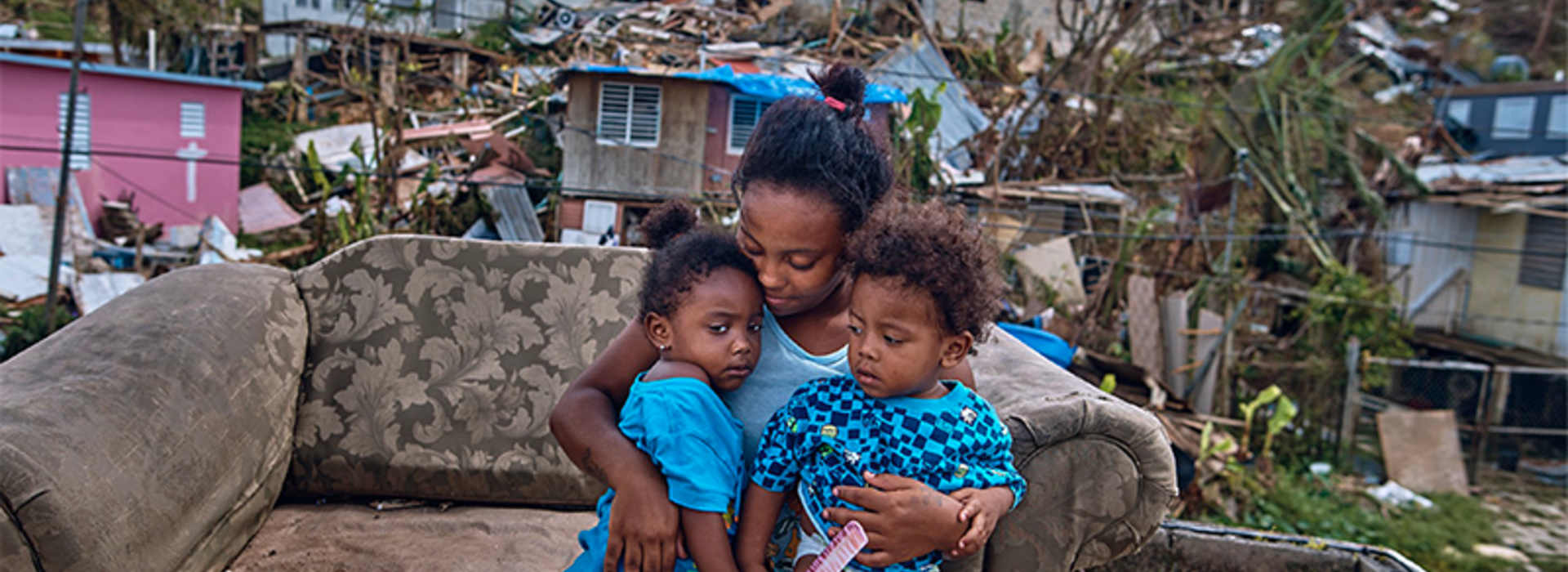
Broken Hearts, Unbreakable Spirits – Surviving Hurricane Maria and Structural Violence in Puerto Rico
As our plane descended in San Juan, I was struck by the sight of the blue FEMA roofs covering houses ravaged by Hurricane Maria. These tarps, designed to last 30 days, still cover some of these structures a year later. “Forgotten” is an apt descriptor for how many Puerto Ricans feel.
I traveled with a group of medical students to Puerto Rico for three days in November 2018 to understand the mental health experiences of Puerto Ricans after Maria and to identify an effective intervention. We interviewed 42 teachers at Escuelo Superior Lysander Borrero Terry, a school in Villalba, a small town in the central region of the island.
They described Hurricane Maria as unlike anything they had experienced before. Most hurricanes have passed Puerto Rico during the night but Maria came during daylight. It was especially traumatic for the locals to see the destruction as it took place. They recalled feeling they might not survive the hurricane. Parents described having to reassure their terrified children, while being unsure of their fate. One teacher said she saw her husband crying in a corner after he told their kids they would be alright.
Once the hurricane passed, people came out of their houses and saw their neighborhoods destroyed. Without electricity or cell phone service, people had no way to contact loved ones. Some still experience lasting effects.
The teachers observed that their once-happy students now had emotional difficulties in the classroom. The island’s suicide rate spiked. One man described feeling helpless as he offered support to someone who had lost everything. Hurricane Maria also broke up families, as people fled the island to the mainland.
Hurricane Maria also reminded the people of Puerto Rico that they lack rights other Americans enjoy. The concept of structural violence is worth understanding here. Structural violence is inequity and harm caused by social structures. Puerto Rico being a commonwealth and not a state, is unique from other regions in the United States hit by natural disasters, a disparity reflected in the slow federal recovery efforts after Maria. A large part of the recovery was aided by locals and donations.
Even before the hurricane, Puerto Rico was deep in debt. The island’s poverty rate exceeds that of our poorest state, Mississippi. Residents of Puerto Rico cannot vote in mid-term or Presidential elections unless they have a permanent address within the United States. This has rendered Puerto Rico invisible to the rest of the world. Hurricane Maria exposed the colonial structures that have led to these inequalities.
The suffering of the people of Puerto Rico was aggravated when their pain was minimized. When the actual death toll from Hurricane Maria was revealed to be 2,975 and not 64 as previously reported, President Trump dismissed this as a smear tactic against his presidency.
Asked how we can help, the teachers requested interventions on stress management and disaster preparedness. They also asked us to tell their stories.
An important part of our work as healthcare providers is bearing witness to social injustice and being allies. Allyship is more than sympathy; it means accompanying others in their struggle and helping open doors for them.
Countering structural violence first requires recognizing it. The recent midterm election was, for many of us, an opportunity to be heard. The people of Puerto Rico did not have this opportunity. It is not foreseeable that they will have the right to vote in the near future. The rest of us, however, can and should contact our elected representatives and advocate for rebuilding Puerto Rico. Supporting non-profits helping Puerto Ricans is another way to show solidarity. Coalición de Boricuas en Minnesota (Coalition of Puerto Ricans in Minnesota) is a non-profit assisting families affected by Hurricane Maria resettle in Minnesota. CrearConSalud is another non-profit that is strengthening the island’s mental health services.
Celebration is a hallmark of Puerto Rican culture. As we wrapped up our visit, we learned that Christmas festivities are starting early this year in Puerto Rico. Christmas was a grim time for Puerto Ricans last year. This year, they will celebrate not just Christmas but also their fortitude.